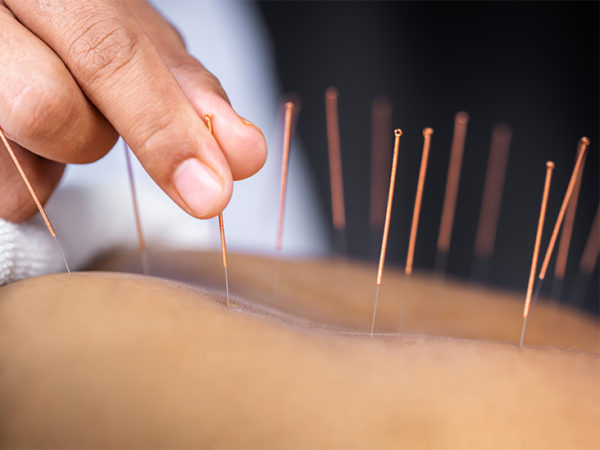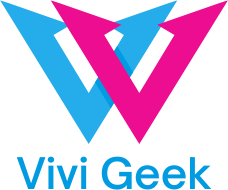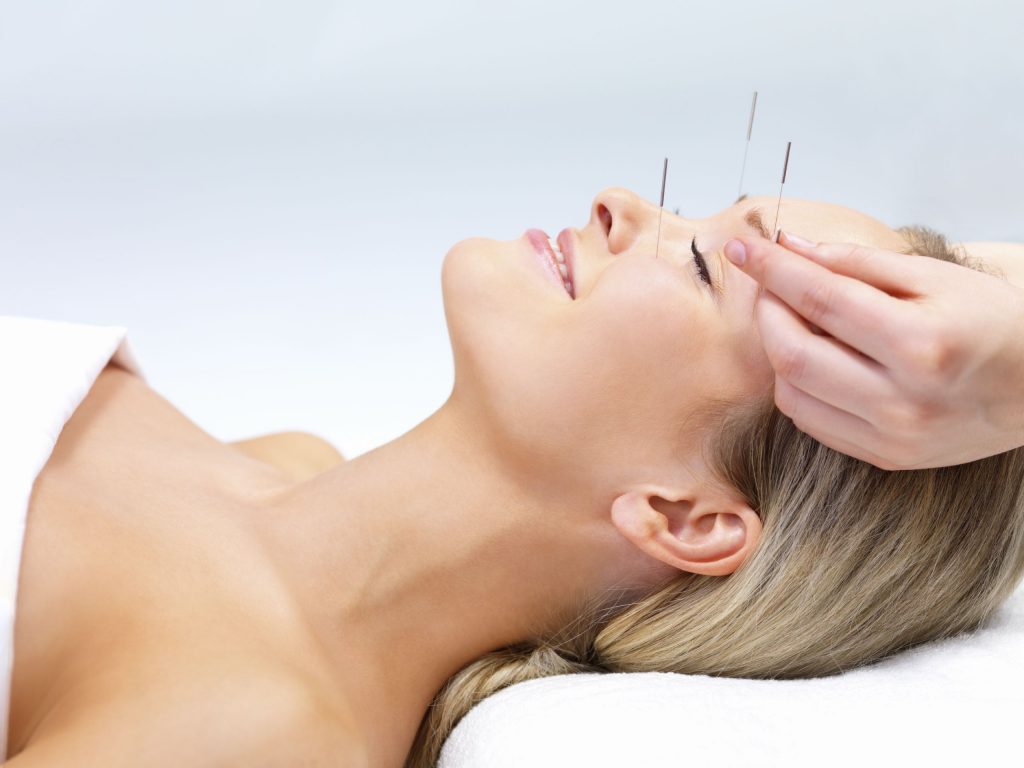Acupuncture is one of the five branches of Traditional Chinese Medicine (TCM), with Chinese Diet, Chinese Pharmacopoeia (Medicinal Herbs), Tui Na massage, and Energy Exercises (Qi Gong and Tai Chi). Acupuncture is based on energy and a holistic approach. According to Oriental medical thought, it acts on the Qi (pronounced chi), which circulates in the body by way of the meridians. Needles inserted on the surface of the skin stimulate precise acupuncture points. In Western terms, it could be said to reinforce the self-regulation and healing processes that normally take place when the body is attacked (by a virus, stress, injury, etc.).
Acupuncture can treat a variety of “imbalances” related to musculoskeletal (arthritis, tendonitis, bursitis), respiratory (asthma), gastrointestinal (Complications, diarrhea), nervousness (depression, stress), etc. It also helps to relieve common ailments (a headache, cold, nausea), but it can not cure serious diseases. Acupuncture could also play an important role in disease prevention. By maximizing the functional activity of the Viscera as well as a circulation of the Substances, it would make it possible to balance all the systems of the organism. This would prevent the disease from finding a propitious ground for settlement.
Acupuncture: The first consultation
Acupuncture is a highly developed and methodical discipline, based on thousands of years of practice. First, the therapist assesses the person’s health status and detects his or her energy imbalances. To do this, the therapist uses observation, palpitations, and detailed questionnaires. He may even question you about the climates or flavors you prefer – more clues to corroborate his assessment. He takes note of your medical history and characteristics (height, weight, complexion, the rhythm of breathing, the sound of the voice, movements, emotional state, etc.). He examines the pulse and tongue, listens to the noises of the stomach, raises the body odors and auscultation, the painful areas associated with the meridians.
Acupuncture: From tingling to deep relaxation
In general, the effect of acupuncture treatment is relaxing. Even if the needles are, at first sight, little inviting, they rarely do wrong. They are barely 3 times larger than a hair and designed to fit into the skin without resistance. Usually, the acupuncturist uses 1 to 15 needles, which he leaves on different points for 15 to 40 minutes, depending on the problem treated. The sensation caused by the needle is compared to a mosquito bite, but it is more pronounced, ranging from a light tingling to numbness, or even an electric shock. Generally, however, these sensations only last for the time of insertion of the needle. Some people fall asleep during the session!

Acupuncture: It is not only about needles
To increase the effects of the treatment, acupuncturists can resort to complementary methods such as printing rotary movements to the needles to amplify the stimulation. Moxibustion consists of applying dried grass on the needles or above the acupuncture points of the heat given off by the combustion of a cone or a moxa stick. Electrostimulation makes it possible to apply a slight electric current to the needles.
There are different schools of thought in acupuncture. Koreans, for example, place needles only on the hands and feet, while other acupuncturists only implant them in the ears, particularly when dealing with addictive disorders. In Japan, the traditional approach is to stimulate the energy points more by the touch (acupressure) than with the needles. The practice is constantly evolving and new styles emerge regularly.
If the sight of a needle gives you vertigo, laser acupuncture (which uses light laser beams accurately) could be an interesting alternative. This technique is particularly used with people whose treatment requires prolonged stimulation and with children.


